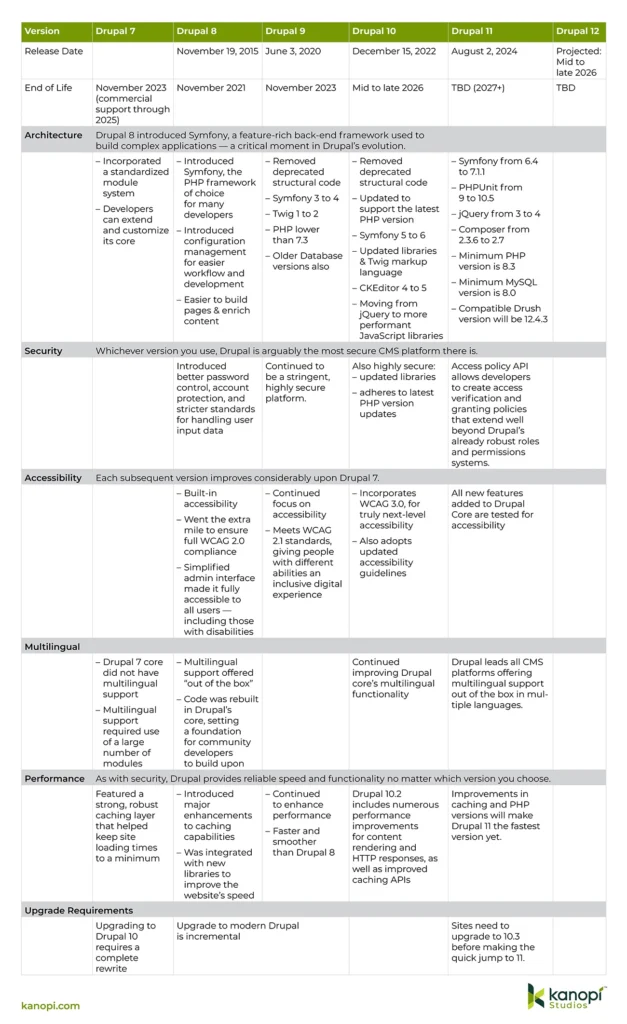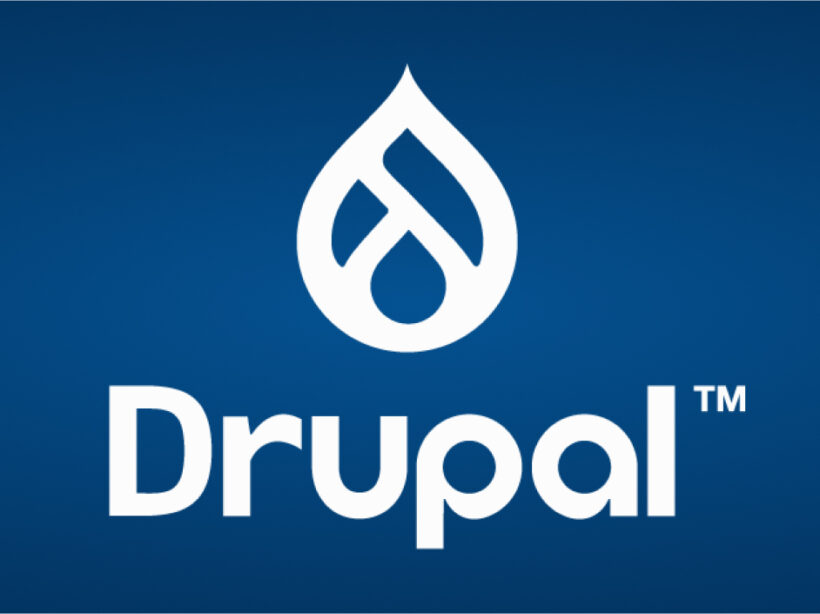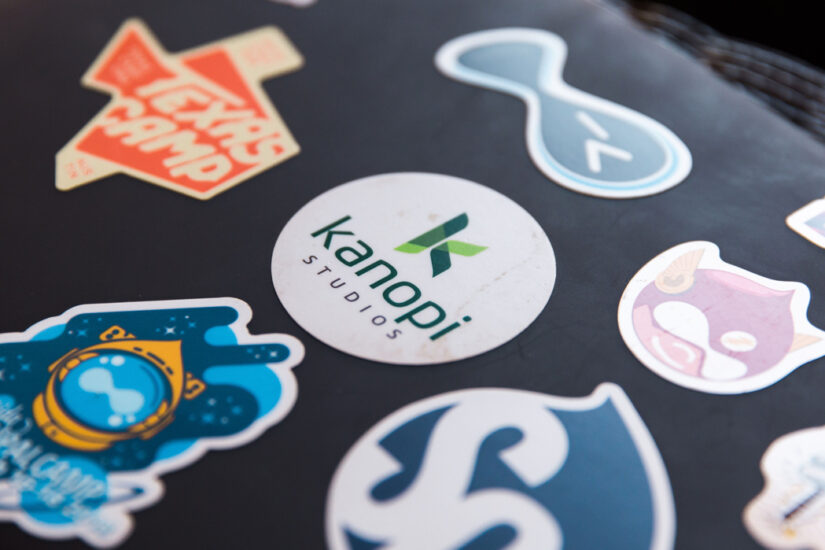If yours is one of the 42% of Drupal sites that are still using Drupal 7, we’re writing this post specifically with you in mind.
After all, you’ve probably heard the news by now; as of January 5th, 2025, everyone’s beloved, trusted Drupal version 7 will reach its end-of-life. If you haven’t done so already, this means it’s time to start thinking about the ‘m’ word — yup, migration — to a newer version.
Modern Drupal’s versions 8, 9, 10, and the newly released 11 are similar in many ways, yet very different in others. The Drupal 7 migration process is kind of similar to finally trading in your trusty old well-worn VW camper van for a brand new Porsche. As you can imagine, a transition of such magnitude could be a tad jarring for some — not to mention a wee bit confusing.
That’s why we’ve created this handy infographic, to give you an overview of the key differences between each modern Drupal version, their respective functionalities, and how they solve specific business needs.
What about Drupal 8 & 9?
Since these versions have both reached their end-of-life, there’s no long term support for them. We’ve still included them in our comparison, since their features are integral to understanding the path of version 10 and beyond; however, we don’t recommend them for new builds or upgrades.
An overview of Drupal 7 to Drupal 12
This chart is best viewed when downloaded.

The one thing to keep in mind is that anything higher than Drupal 8 is part of Drupal’s composable future — i.e., not only can Drupal integrate with virtually any business or marcom software or service, but it in itself is composable. Taking the best open source tools — CKEditor, Symfony, and Twig, for example — allows modern Drupal to keep innovating and improving while keeping your website’s appearance and functionality intact.
Drupal remains an excellent platform, and its newest releases demonstrate its commitment to staying current and providing the best possible experience to its users. It’s also incredibly complex, which is why any successful migration from Drupal 7 will involve a great deal of planning and resources — not to mention expertise. That’s why it’s highly recommended to work with a web developer, whether as part of your organization or a third-party web development firm.
Where does Drupal CMS fit in?
Drupal CMS aims to make Drupal more accessible to a broader, less technical audience while keeping the platform feature-rich. Rather than downloading and installing the latest version of Drupal, a user who wants to spin up a Drupal site quickly can instead download Drupal CMS for an easy-to-use, out-of-the-box experience. This makes it easier than ever for users to go from installation to a fully functional website, even if they have little to no prior Drupal experience. Drupal CMS comes pre-packaged with carefully curated “recipes” that cater to everyday use cases. We’ve written about Drupal CMS here.
Kanopi worked on its Recipes initiative. Check out this webinar by Kanopi’s Jim Birch called “Recipes. Starshot, and the Future of Drupal.” (47 minutes)
Need more help?
When searching for the right Drupal partner, it’s helpful to find an organization with experienced developers who contribute to the project on an ongoing basis. At Kanopi Studios, we provide Drupal development services for all types of organizations, including nonprofits, corporations, healthcare organizations, and higher education institutions.
We’ve also written several blog posts about the various Drupal versions and their upgrade paths:
- All about Drupal CMS
- All about Drupal 11
- What you need to know about the Drupal 9 to 10 migration
- The ultimate Drupal 7 to Drupal 10 migration guide for marketers
- Drupal 7 end of life: a guide to next steps
Ready to launch the migration process? Contact our team today!










